A Look Back with Pride, a Look Forward with Excitement: 7 Lessons Learned from Being a MACER
The past seven months I spent as a MACE student at Kingston University were no picnic for me! Going back to university to complete a second postgraduate degree as a mature student while working as an overseas Social Media Strategy Consultant, was often nerve-wracking. I believe it was just before Christmas break that I realized that I am in over my head. Yet again, I have always enjoyed a good challenge and what better than embarking on a challenge that allows me to better my skills and acquire new knowledge.
However, in order not to run the risk of sounding cliché I am going to be very honest about what happened: In the interest of continuing my academic year successfully without compromising my job (and of course, retaining my sanity in the process) I have come to the conclusion that priorities had to be determined and sacrifices needed to be made. And so, I have made the decision to dedicate my efforts to the one course that excited me (and at times, terrified me), challenged me, brought the very best in me—skills and talents I never knew existed— and most importantly helped me crystallize my future career goals; the one course that made my grueling journey at Kingston University all worthwhile: “Designing a Business” (DYB).
1. Self-reflection as a structure for professional growth
Despite the highly practical aspect of our course, our journey in DYB has nevertheless been a journey of self-awareness and self-development: “know thyself, improve thyself, and complement thyself” (Tjan, 2012). Not only, did DYB allow me to learn new skills and unearth hidden talents, but most importantly it taught me to be aware of missing skills and areas that needed further development. Throughout my journey with Le Petit Sac, I have come to realize that while real-life experiences are a great way to learn, yet by themselves, such experiences cannot provide me with proper insights on what to improve in myself. It is only when I take a step back to reflect on the value of these experiences, and what I could have done differently, that the actual learning process takes place. You see, it is self-awareness, which “involves active, persistent, and careful consideration and contemplation” of one’s knowledge (Sass, 2012), that ultimately leads to one’s professional growth and contributes to the building of a successful business (Tjan, 2012). Without self-awareness you are ignorant of both your strengths and weaknesses, your “superpowers” and your “kryptonite” (Tjan, 2012).
2. Design thinking as a trigger for Innovation
In a highly cluttered world where only innovation can provide a source of differentiation and a competitive edge to a new business (Brown, 2011), we were asked in DYB to use design thinking techniques to contribute new ideas by creating a new product or service that solves an existing problem differently (Beaumont, 2011), and so we did. I have always been so fond of wearing my high-heeled shoes. However, due to the hectic lifestyle we lead in London, the long walking distances, and use of public transportation wearing high-heels soon became a source of torture for me. I recall, during the first few months of arriving here, getting dressed up was a major headache, and always ended up with me substituting my high- heels with flats just minutes before heading out. Additionally, I must admit that seeing women walk barefoot in streets and tube stations on a late Friday or Saturday night has been a shocking cultural experience for me.
I recall sitting on the train from Kingston University to Waterloo station one day starring at a woman passenger while she searched restlessly for her ticket in her huge Marry Poppins bag that carried her heels, diet coke bottle, what seemed to be the rest of a tuna sandwich, keys, wallet, papers, hair clips among other interesting things. In the midst of her crisis , the blond woman was being teased by her (male) colleague for carrying a pair of heels in her bag, and for that she answered that she had a meeting that day and needed to look serious and confident. That everyday banal encounter marked me and made me aware of the important role, the right pair of shoes can play in a woman’s life.
And so, after noticing a problem, researching its causes, examining how current solutions in the market are solving, or failing to solve the problem adequately, contemplating solutions, getting involved in a long phase of prototyping and experiments, talking to industry experts, gathering feedback from clients, and finally, iterating on product design that the current Le Petit Sac was born. By framing a woman’s end journey on a night out and attempting to solve her problem by close and empathetic observation, design thinking enabled us to generate a holistic and innovative product that aims to make the beautiful functional and help women maintain their style and elegance while being comfortable.
3. Learn by Making
We usually learn to do things while thinking about them and doing them at the same time. For example, we learn to drive, not by reading manuals or textbooks, or attending lectures about driving, but by actually sitting behind the wheel and practicing our driving. Contrary to recent popular belief that all educational systems are created in such a way to hinder or kill creativity (Robinson, 2012), learning by doing—which is the process of achieving productivity through practice, self-amelioration small innovations (Dougherty, 2014)—has been the distillation of the learning philosophy of DYB at Kingston University. Throughout the course we were invited to become active rather than passive “consumer(s) of education” (Dougherty, 2014). We were makers, creators constructing a new kind of education and learning system that promotes creativity and critical thinking.
4. Build a Lean Startup
As explained in an earlier blog entry, Eric Ries’s lean startup philosophy was applied for developing Le Petit Sac as a business (Maamari, 2014). Since we are introducing a new concept to the market, we adopted Eric Ries’s MVP (minimum viable product) strategy during our product development phase (Ries, 2011). Significantly, we created a series of only 6 Le Petit Sac clutches that were not fully refined, yet had all the core features that allow them to fulfill their purpose, along with an advert video hosted on our website that tells our visitors the story of why Le Petit Sac was created and how to wear it. By doing so, we were able to gather significant feedback from customers and early adopters about our product with the least effort possible (Maamari, 2014). Additionally, due to the high-end positioning of our product, we underwent a long and grueling prototyping phase that exceeded over a 3-month period. While we were able to finally generate a good quality product, we did however miss out on sales opportunities. However, our aim at that stage was to see the reception of Le Petit Sac when launched to the market. Hence, using the Lean Startup approach was perfect for us because it allowed us to test our vision continuously (Ries, 2011).
5. Know Thy Market
Perhaps an obvious lesson that many acknowledge, yet fail to abide by when launching a new product or developing their business is finding out who their target audience is and then, catering their product or service and communication messages accordingly to drive sales. Often startups get caught up with their own product or service and tend to forget everything else, focusing their efforts on a “a one-size-fits-all marketing and sales approach” (Evans, 2013). I can still hear Dr. Beaumont’s words resonating in my ears when she stood in the middle of class back in October and warned us: “if your target audience is everyone then you have dig deeper to prioritize and rank them. Otherwise, your target audience is no one” (Beaumont, 2013). By following the Lean Tribe Canvas model, a customer-centered framework that maps out the different elements we should consider when launching a new product, Le Petit Sac was able to move from ideation phase to development and finally to implementation successfully (Beaumont, 2013).
6. Be Different
In a world saturated with “me-too” products and services competing for the attention of customers (Neumeier, 2007), my experience with Le Petit Sac, as part of the DYB course, has taught me that it’s ok necessary for any successful business to “be” different, to “think different” (Apple Inc., 1997), and to “zag” when everyone else zigs (Neumeier, 2007). However, the product or service only needs to be different enough to appeal to the customer, have a tangible impact and stand out from the clutter available in the market, “but not so much as to alienate existing customers” (Ideo.com, 2014).
7. Step out of your comfort zone
I can still remember how nervous and excited I was as we were briefly introduced to the different courses we will be undertaking during our first day of MACE orientation week. It all intensified when I started hearing the deafening words: “In Designing a Business… create a new product or a service… by mid-October you should have selected your teams … your first prototype must be ready by end of December… by January you will need to be done with manufacturing your product and move on to sales”. I could not help but think to myself: How will we ever develop the needed skills to build products from scratch? Me? the English Literature student? The Social Media specialist sitting behind her screen, analyzing and consulting? Me.. Build a product?
Even if I (miraculously ) managed to make it , will I ever be be able to pull through and create something worthy and valuable? Well allow me to admit that after being the recipient of a £250 prize for Best Business Idea from Bright Ideas 2014 competition, winning the Best Young Enterprise Company award for 2014 at Kingston University, as well as, Kingston University’s entrepreneurship award and a £3,000 in seed money for Le Petit Sac, I now look back at that day now and laugh at my naivety. You see, little did I know, back then that I was already on my way to transformation and that with design (thinking ) you should really “never stop thinking that you can’t renew yourself, do it differently, see another way through and not be frightened by doing things you don’t know” (Wolff, 2010). In a way what the DYB course has taught me is that in an increasingly competitive, fast-paced world, it is only those who are willing to constantly work on improving themselves, updating their skills, taking risks, stepping out of their comfort zone and diving into uncertainty who will eventually reap the biggest rewards (Warrell, 2013).
Looking Forward
During my academic year at Kingston University, I have juggled many hats at Le Petit Sac; from managing the team, devising strategies and overseeing development, to the conceptualization of the business idea, designing the product, the brand identity as well as creating and managing the current Le Petit Sac website.In a recent article for My Kingston, I said that Le Petit Sac “has slowly turned into a real business” (My Kingston, 2014), and that’s true for me. I am extremely passionate and determined to pursue my managing and creative work with Le Petit Sac once the DYB course is over. My journey has enabled me to acquire key entrepreneurial skills that would otherwise be wasted if not put to use in the real world. Hence, I have dedicated my dissertation project to devise a feasibility study that can help me realize Le Petit Sac’s full potential, and make it grow it into a national, and hopefully, a global brand in the future. After few years of trying to climb my way up the corporate ladder by working long days and nights for someone else without experiencing any sort of personal fulfilment, starting my own business feels like a natural step for me. My journey in DYB course has made me fully aware of the risks and the challenges that lay ahead of me as a female entrepreneur in the UK, yet it has also introduced me to a wide and influential network of business mentors, and equipped me with the right level of confidence, knowledge, and tools needed so I can survive the tide and launch my career successfully.
With our academic year coming to an end, I have recently finished off setting my milestones for the upcoming phase between refining the design and quality of Le Petit Sac, securing a patent to generate interest from high-end retail stores, reworking the production flow and securing contracts with local manufacturers and suppliers, changing our current business model and shifting to e-commerce, as well as achieving brand recognition— the upcoming year is looking both very challenging and promising to me. As far as blogging is concerned, I have not yet decided whether or not I will continue to use this platform for my future blog posts. However, I promise you this: I will continue to blog. So stay tuned to find out how my journey goes!
How to Make it in World of Advertising Clutter & Loss of Audience Attention?
Whether you are out and about, listening to the radio, watching TV, or using the computer, how often do you come across such scenes on a day-to-day basis?
What is advertising clutter?
Every day we are exposed to thousands of advertising messages via different media. Every service, product and brand compete to gain our attention and consequently, increase its market share. Advertising clutter may be defined as “a situation when an advertisement is surrounded by other advertisements, thereby forcing it to compete for the reader’s, viewer’s or listener’s attention” (Banerjee, 2009).
Statistics floating around the marketing publications suggest that the number of promotional messages that are competing for consumer’s attention every day have gone “from about 500 ads a day back in the 1970s to as many as 5,000 a day today” (Marketing-made-simple.com, 2014).
Usually, consumers were always able to avoid mass media advertising. Often we used television breaks to make snacks or hit the toilet. When reading magazines we could simply turn the page or move on to an entire new section. On car radios, commuters would shift between alternative stations as soon as the commercials become intolerable. Today, with the advent of technology, avoiding commercials is made even easier, “many people watch only shows that were recorded earlier so the commercials can be skipped, or many broadcast services are now by subscription and commercial-free”(Rotfeld, 2006).

Nevertheless, it seems that “the advertisers’ “solution” to audience avoidance of their messages is to increase the number of messages, so even the effort of commercial avoidance becomes a source of audience frustration” (Rotfeld, 2006). As a result, Television commercial breaks are longer and the commercials are shorter, and online ads need to run for at least 3-4 seconds before the “Skip” button becomes available for you to use.
So, how do you get noticed in the crowded modern marketplace?
1. Ensure your ad is appealing
Some themes strike an emotional chord with the vast majority of the population. However, if your product does not appeal to the emotional side, you will need to highlight its practicality to your customers.
2. Choose the right channel
Social media and traditional mass media channels are all completely saturated with marketing messages and competition is very high. Hence, you need to consider who your target audience are and ensure you target them accordingly. Sometimes targeted letters to individuals can prove to be more successful than generic ones sent to the masses.
3. Think outside the box
We live in a highly competitive world, so don’t be afraid to resort to innovative ideas in order to engage your customers. In fact, “91% of marketing professionals felt that they could save money and better impact consumers by being more innovative about the media they use” (Marketing-made-simple.com, 2014). Between viral ads, experiential or guerrilla marketing, there is a variety of different innovative approaches to marketing and advertising that you can choose from according to your brand and need.
4. Keep the message clear
How many times did you come across an advertising or marketing campaign which left you clueless about the brand or the nature/purpose of the product depicted? Hence, it is of utmost importance that you keep your message clear and simple. Make it obvious what you’re offering to the customers and that the steps to achieve your offer or redeem it are kept as easy as possible.
What your Company NEEDS to Thrive and Why Lebanon will Never Progress!
I know I have been missing in action in terms of blogging for the past two weeks; however, I cannot start to explain how busy I have been. The closer we move to the end of term one, the more important deadlines start to creep up on us and the more deliveries and tasks that demand to be urgently addressed across the different schools arise. So, I guess a little update is in order!
Perhaps one of the most important milestones we have had was selecting our final business group, that is the team we will have to stick to throughout the module, and even way after the academic year at Kingston University has come to an end.
Course lecturer, Corrine Beaumont has ensured we are fully aware of what is ahead of us when it came down to choosing our business teams and never missed an opportunity to share with us abundant tips and advice on choosing our team members, such as:
– The focus on diversity in terms of educational and vocational backgrounds, current course concentration, skills, talents, and most importantly cultural and ethnic diversity within one group. Each group, for example, was allowed a maximum of two members from the same country. Diversity adds richness to one’s team and facilitates communication and exchange of different views and perspectives especially when attempting to solve a problem.
-The size of the group. While one might be tempted to work with close friends on the module, people they feel they really click with, it is very important to ensure the members on each group are between a minimum of 3 people and a maximum of 5. Any less than 3 members might become overwhelming when it comes to tasks distribution for each member on the team—not to forget how limiting it can be in terms of diversity. On the other hand, having more than 5 members on the team will prove to be a hassle (I can vow to this myself. I am currently in a group of 8 people at the Design School and things are pretty much starting to get out of hand. Not to mention, the degree of excitement we get every time we try to agree on a time or day to meet… YEAY)
-Paying attention to harmony. Due to the diversity present in each team, it is very important to keep an eye on the degree of chemistry and harmony between the various members. The last thing you want to have is team members who have absolutely no respect or tolerance for one another. A good vibe and appreciation to each member’s talents must be there right from the start.
Beaumont also made sure we mingled enough both outside and inside the classroom especially during the first few weeks of the term. I recall how she used to make us work in different groups every week in order to get “up close and personal” with people we have not yet worked with in order to gain a better understanding of one another as well as the different skills and talents we each have. It was quite interesting during that phase to notice how each one of us had one eye on the hunt for possible members to join their team, and on other eye on our personal behavior as we unconsciously transformed into a “walking-talking” brand promoting our unique set of skills and the type of value we can each bring to a team.
While one might be tempted to either neglect the above-mentioned tips, or even worse; take them for granted, it is worthwhile to discuss their importance in generating creativity and innovation—which are highly important for us to ensure the success of our business. Hence, I would like to draw on a book I have recently started reading by Richard Florida, director of the Martin Prosperity Institute at the Rotman School of Management, University of Toronto, entitled Cities and the Creative Class.
In his book, Florida discusses why cities such as Baltimore, St. Louis, and Pittsburgh “fail to grow despite their deep reservoirs of technology and world-class universities,” or why cities such as Miami and New Orleans “do not make the grade even though they are lifestyle meccas”; while other places such as the San Francisco Bay area, Boston, Washington, DC, Austin, and Seattle… are considered “truly creative places” (Florida, 2003. p 10). According to Florida, the key for a place to prosper in the creative age lies in the “3Ts: Talent, Technology, and Tolerance” (Florida, 2003. p 10). He defines Tolerance as “openness, inclusiveness, and diversity to all ethnicities, races, and walks of life. Talent is defined as those with a bachelor’s degree and above. And technology is a function of both innovation and high-technology concentrations in a region” (Florida, 2003. p 10). Hence, while cities like Baltimore are filled with talent and technology, they fail to strive because they lack tolerance because “they are unwilling to be sufficiently tolerant and open to attract and retain top creative talent” (Florida, 2003. p 10). On the other hand, in places like Miami, where cultural and ethnic diversity is prevalent, creativity is almost non-existent because of the lack of the required technology (Florida, 2003. p 10).

Ironically, (and please do excuse the diversion here. I promise it will prove to be quite interesting), at around the same time when we were supposed to be finalizing our teams, a period in which we were inspired and driven by notions of tolerance and diversity, guess what was trending on my social media channels?
My Instagram feed displayed a picture of a bunch of Lebanese girls who thought it will be funny to dress up as black maids for Halloween.
That’s not all. The absence of Tolerance in Lebanon seemed to have been accompanied by a lack of Technology as Lebanon struggled around the same time with $ 1.6M in overdue unpaid bills to the IMEWE (the internet cable provider).

But let’s look at the bright side: while two of Florida’s 3Ts might not be prevalent at all times in Lebanon (Tolerance and Technology), Talent on the other hand is highly abundant. Lebanon is quite famous for its high quality of education. Every year Lebanon graduates thousands of young men and women from elite universities in the region. In fact, Lebanon has ranked 10th best in the world for the quality of its educational system in 2013.
Source: World Economic Forum’s 2013 Global Information Technology Report
Before moving on to introduce you to our business team, I would like to say something first. I honestly do not wish to spread harmful rumors about my country or even harm its reputation. While some might argue that the above given examples are not very representative, especially the “girls dressed as black maids” picture, I say let us not forget other forms of intolerance, such as the religious and political intolerance we have for one another, which although may not be very dominant, no one can deny that it still exists nowadays and that it has severe consequences on the general well-being and progress of our country. Also, we should recall the many times a person of color was denied entry to a fancy club, restaurant, or resort in Lebanon… Stuff like that unfortunately, still happens nowadays– even if they do at such a scarce rate. As for the technology part, I mean seriously. We do not even have a public transportation system, and let’s just stop at this for now because we are beautifully failing to harness the power of technology in order to progress in Lebanon. Again, I love my country. My aim is not to stereotype or launch false accusations but to shed light on severe problems which we currently suffer from and which are hindering our progress and disabling us from being a place where true innovation and continuous creativity thrive and progress.
This been said, without further ado…. I introduce you to Makerz, a group of talented young people from different vocations, backgrounds, and cultures collaboratively willing to make use of available knowledge, human resources, technologies and diverse research methodologies to make it in the business world. “So, what is it we are trying to build?” you ask. Well, that is a question I would like to keep for next time!




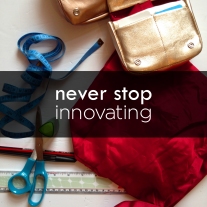
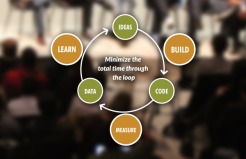
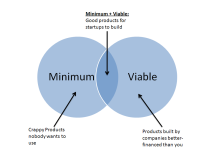







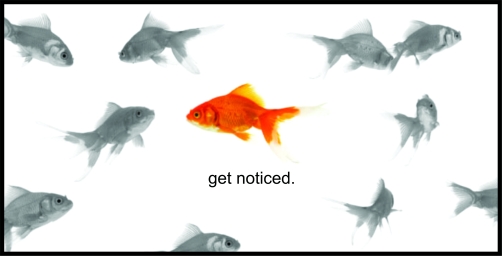
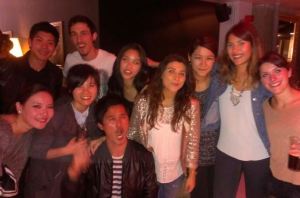



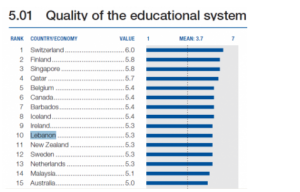
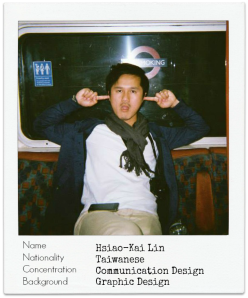
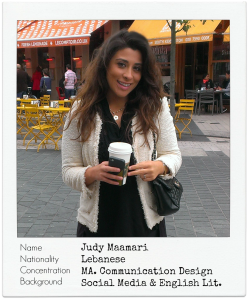
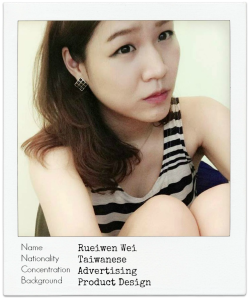



Recent Comments